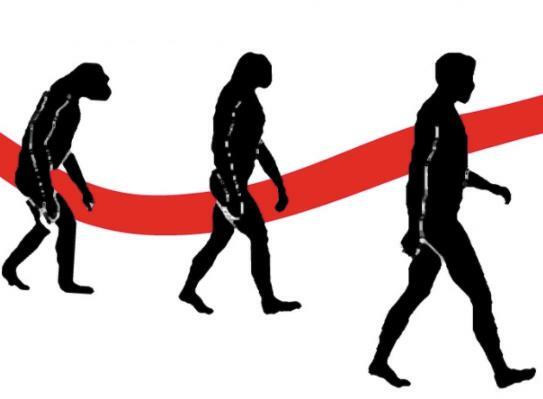
“One day, for no reason, I was at home and I began to feel like I was short of breath. I started to worry because I didn't know what was wrong with me and my heart was beating faster and faster. It was only a few minutes but it seemed like hours, I was very scared, I thought he was going to give me something at that time ”. A panic attack or panic attack It is the sudden appearance of intense fear or discomfort accompanied by somatic symptoms that appear suddenly and from a state of calm or anxiety. They last between 5 and 20 minutes or so, and people who suffer from them can experience physical and psychological symptoms. When there is a panic attack, the person has the feeling that they are in a dangerous situation even if it is not real, so the nervous system activates warning signs and certain reactions such as increased muscle tension (preparing the body to flee or fight), increased heart rate, breathing becomes shallower and more agitated (hyperventilation may occur), sweating, feeling of loss of control, intense terror, among other types of reactions.
In this Psychology-Online article, we are going to learn more about what a panic attack: symptoms and treatment.
Index
- Symptoms of a panic attack
- How a panic attack occurs
- Consequences of a panic attack
- Panic attack: treatment
- What to do in a panic attack
Symptoms of a panic attack.
Keep in mind that a panic attack by itself cannot be considered a mental disorder. Panic attacks can appear in any other anxiety disorder (separation anxiety disorder, social phobia, agoraphobia, etc.) and in other mental disorders such as depressive disorders, substance use disorders, post-traumatic stress disorder, etc. and in some medical conditions, (for example, gastrointestinal, cardiac, vestibular)
The symptoms of panic attack or panic attack they usually appear abruptly and reach their maximum expression in a few minutes. Generally, the following are presented:
- Shaking or shaking.
- Sweating
- Nausea or abdominal discomfort.
- Feeling faint or dizzy.
- Feeling of choking or shortness of breath
- Chills or feeling hot
- Feeling numb
- Acceleration of the heart rate.
- Feeling of unreality or depersonalization (separating from oneself).
- Fear of "going crazy" or losing control.
- Affraid to die.

How a panic attack occurs.
As we have already seen at the beginning of this article, when we suffer a panic attack an activation occurs in our alarm system.
The key questions on this issue would be: why does an activation occur in our alarm system without actually being in danger? And how do you get to produce a panic attack? There are different ways that we can experience symptoms associated with a panic attack for no apparent reason and even when we are in a calm state. Some of them may be the following:
- It may be that for various reasons, such as: going from lying down to getting up quickly, bending over, being too suffocated by the heat, etc., can cause a voltage drop. When this happens, some symptoms occur such as: dizziness, feeling faint, blurred vision, vertigo, etc.
- When we go through very stressful situations, our body releases adrenaline in greater quantity and other neurotransmitters such as cortisol. This can lead to some symptoms related to the panic attack (acceleration of the frequency heart disease, numbness or dizziness, nausea, abdominal discomfort, etc.) even after the stressor has missing.
- Some physical symptoms can be generated when the body experiences normal changes and specific to each vital stage. These are changes that all of us experience but that sometimes it is not easy to notice.
- Sometimes, even without the person being aware of it, they tend to breathing quickly and shallowly, which can lead to hyperventilation.
The panic crisis is generated because the person interprets any of these situations (considered normal and that can occur more or less frequently) as threatening and extremely dangerous, so it tends to give him catastrophic interpretations when you experience them such as, for example, that you are about to die, that you are going to go crazy, that you lose control, etc. These catastrophic thoughts trigger the alarm system, which produces the emotions, sensations, and behaviors of a panic attack.
It is enough that we believe that we are really in danger for the system of alarm and increase in intensity the sensations produced by the normal reasons described previously. All this results in the person ending up experiencing a panic attack.
Consequences of a panic attack.
Anyone can experience a panic attack in isolation at some point in their life and in most cases, they don't give it much importance. They tend to attribute them to being nervous, being very stressed, among other causes that they consider not worrisome.
However, other people who experience it may be left in distress and fear of experiencing more attacks in the future. When that happens, the affected person will be more attentive than normal to any type of internal sensation, which which will increase the probability that you will perceive it more intensely (heartbeat, abdominal sensations, etc). This same attention will facilitate the occurrence of new crises, since in any situation that the person considers out of the ordinary (although this don't be), catastrophic interpretations will soon come to mind, leading to a vicious cycle and new panic attacks.
When panic attacks are constant and fear is intense and recurrent, they can bring the following consequences:
- Panic disorder: It is generated when panic attacks become unforeseen and recurring. There is ongoing concern about future panic attacks or their consequences, and the person begins to show avoidance behaviors (for example, avoidance of exercise, family situations, etc.).
- Agoraphobia: It is common for people with panic disorder to develop agoraphobia. They begin to avoid situations or places, such as: going to the supermarket, getting on public transport, traveling, etc. They may even end up not leaving their home for a long time. This is because they fear that a panic attack will occur to them and they cannot be treated or the flight could be embarrassing.
- Depression: If the person does not receive adequate treatment to eliminate panic attacks, it is easy for a depression, as over time you tend to isolate yourself from your family, friends, co-workers, etc., and your self-esteem and well-being are severely affected by being so limited.
Other consequences:
- Relationship, work and academic problems.
- Financial problems.
- Inability to move towards personal goals and objectives.
- Increased risk of suicide.
- Alcohol or substance abuse.
- Appearance of other associated mental disorders.

Panic attack: treatment.
People generally recover from a panic attack without the need for treatment, however some end up developing a panic disorder. When this happens, you should start a treatment as soon as possible, because the longer you allow it to pass, the more difficult it becomes to overcome, although it is never impossible.
The psychological treatment for panic disorder consists of educating and informing the person about the nature of this disorder and its evolution. You are also taught a series of techniques and strategies to decrease your level of stress and anxiety about the possible appearance of panic attacks. As well as working on modifying those catastrophic thoughts related to the symptoms experienced during the panic crisis. All this in order to gradually reduce the symptoms.
The cognitive behavioral therapy in combination with the administration of some drugs, such as antidepressants and anxiolytics, have shown great efficacy for this type of disorder.
What to do before a panic attack.
After you have done an in-depth look at panic attack symptoms and treatment, here are some advice that can be useful for control a panic attack:
- Take a deep and slow breath, so that you notice your abdomen swell, hold the air for a few seconds and then exhale slowly through your mouth. Repeat the same process at least 5 times.
- Always keep in mind that the reactions you experience are normal, even if it seems that you are in real danger.
- Try to occupy your mind with other types of thoughts, stop paying all your attention to the symptoms you are experiencing.
- Do not make an effort to fight against these feelings and to want to prevent the crisis from occurring, simply breathe and let them be keeping in mind that nothing is happening.
- Find a comfortable place where you can be while these sensations pass.

This article is merely informative, in Psychology-Online we do not have the power to make a diagnosis or recommend a treatment. We invite you to go to a psychologist to treat your particular case.
If you want to read more articles similar to Panic attack: symptoms and treatment, we recommend that you enter our category of Clinical psychology.


